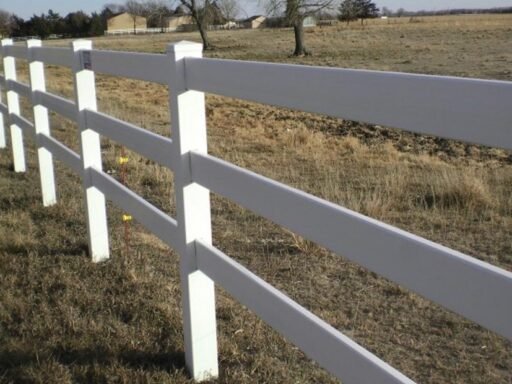Dry rot is a common issue that plagues many homes, especially those in areas with high humidity or moisture levels. If left untreated, it can wreak havoc on a building’s structural integrity, leading to costly repairs and potential safety hazards. We’ll delve into the world of dry rot, exploring its causes, signs, repair techniques by Lifetime Exteriors in Vancouver, and, most importantly, how to prevent it from occurring in the first place.
Understanding Dry Rot: Causes, Signs, Repair Techniques, Costs, and Prevention
Dry rot, scientifically known as Serpula lacrymans, is wood decay caused by fungal growth. Unlike wet rot, which thrives in consistently damp environments, dry rot can flourish in areas with periodic moisture exposure. Common causes of dry rot include leaking pipes, poor ventilation, and untreated dampness. Identifying dry rot early is crucial to prevent further damage. Signs of dry rot include musty odors, warped or cracked wood, fungal growth resembling cotton wool, and a brittle, crumbly texture in affected areas.
Assessment and Preparation for Repair
Before diving into repairs, a thorough assessment of the extent of the damage is necessary. This involves inspecting all potentially affected areas, including walls, floors, and structural supports. A moisture meter can help determine the moisture content in wood, aiding in pinpointing areas of concern. Once the damage is assessed, proper preparation is critical. This includes removing any damaged wood, eliminating sources of moisture, and ensuring a dry and clean work environment.
Dry Rot Repair Techniques
Several techniques are employed in repairing dry rot, depending on the severity of the damage. For localized dry rot, where only a small area is affected, epoxy consolidants and fillers can reinforce and restore the integrity of the wood. This involves removing decayed portions, applying the consolidant to strengthen the remaining wood, and filling gaps with epoxy filler. Replacements may be necessary for more extensive damage, such as structural beams or joists affected by dry rot. This involves carefully removing and replacing damaged sections while ensuring structural stability.
Preventing Future Dry Rot
While repairing dry rot is crucial, preventing its recurrence is equally essential. Implementing proactive measures can significantly reduce your home’s dry rot risk. Proper ventilation, regular inspection of plumbing and roofing systems for leaks, maintaining optimal indoor humidity levels, and treating wood with protective coatings or preservatives are effective preventive measures. Additionally, promptly addressing any signs of dampness or moisture can help thwart dry rot growth before it escalates.
Professional Assistance and DIY Considerations
While DIY repair kits and techniques can be suitable for minor cases of dry rot, it’s essential to recognize when professional assistance is necessary. Structural issues, extensive damage, or uncertainty about the repair process are indicators that a professional should be consulted. Experienced contractors have the expertise, tools, and resources to handle complex dry rot repairs safely and effectively. They can also provide valuable insights into preventive measures and long-term solutions to mitigate future risks.
Moreover, DIY enthusiasts should exercise caution and follow manufacturer guidelines when using epoxy consolidants and fillers. Improper application or incomplete removal of decayed wood can lead to ineffective repairs or exacerbate the problem. Additionally, safety precautions such as wearing protective gear, working in well-ventilated areas, and disposing of hazardous materials responsibly should be noticed during DIY repair endeavors.
Environmental Impact and Sustainable Practices
Recently, there has been a growing emphasis on environmentally friendly construction practices and materials. When addressing dry rot repair, it is prudent to consider the environmental impact of chosen repair methods and materials. Opting for eco-friendly epoxy consolidants and fillers, sustainably sourced replacement wood, and implementing energy-efficient measures during repairs can contribute to a greener approach. Furthermore, incorporating long-term solutions that minimize moisture intrusion and promote natural ventilation aligns with sustainable building practices, benefitting both the environment and homeowners.
Educational Outreach and Community Awareness
Promoting awareness about dry rot, its causes, repair techniques, and preventive measures is integral to fostering a knowledgeable community of homeowners and professionals. Educational outreach programs, workshops, and online resources can empower individuals with the information and skills to identify, address, and prevent dry rot effectively. Collaborative efforts between government agencies, environmental organizations, and industry stakeholders can enhance awareness and promote best practices for sustainable, dry rot-resistant construction and maintenance. By prioritizing education and community engagement, we can collectively combat dry rot and preserve the integrity of our built environments for generations to come.
Dry rot repair is a multifaceted process that requires careful assessment, preparation, and execution. Homeowners can effectively combat this destructive fungal infestation by understanding the causes and signs of dry rot, employing appropriate repair techniques, considering cost factors, and implementing preventive measures. Regular maintenance, vigilance, and timely intervention are crucial to preserving your home’s structural integrity and longevity, ensuring a safe and healthy living environment for years to come.





